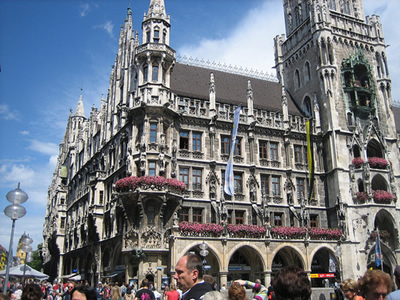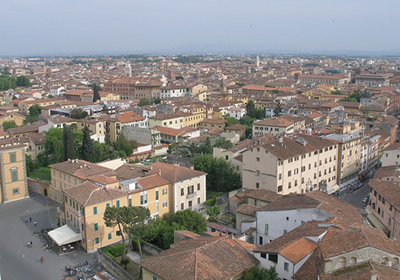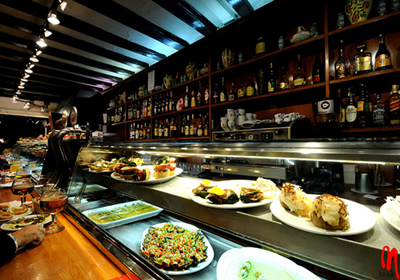Travel routes to Europe by road – Part II
In total, 830 km, which is passed through places such as Cologne (you have to stop to see, or yes, the Cathedral, the masterpiece of the Gothic style) and Nuremberg (on a quick tour on foot you can enjoy milestones such as the Street of Human Rights, the home of painter Albrecht Dürer and the old town stalls, selling delicious sausages seem to be typical of the city). At a leisurely pace the journey takes just over seven hours, so it is safe evening you can enjoy the Gothic tower of the City of Munich appearing on the horizon.
Photography by por Artep ^_^
Munich is the capital of Bavaria and is known worldwide for Oktoberfest, a festival that takes place between September and October, with a mission to celebrate the passion these people have for the beer. The festival, which this year ends on October 3, takes place during two weeks in the Theresienwiesen, a site located 10 minutes from downtown where you get up tents that house bars, restaurants, music venues and spaces for dance.
If you do not arrive during the Oktoberfest, Munich also offers many other attractions (good beer there all year and everywhere) and the Gothic church of Our Lady, the Olympic city, museums Kunstareal area and the elegant stores Maximilianstr street fashion. During the tour can not fail to try «fast food» typical of Munich, which is the Weisswurst, a white sausage that is served with a Brezno (equal to the pretzel) and a huge glass of wheat beer.
Passing through the spectacular scenery of the Austrian mountains, the route from Munich to Italy goes through Innsbruck, the Tyrolean capital of culture, a site that seems to be the set of a Disney film, ideal for a short visit. The ride to Pisa is 720 kilometers (41 euros toll), but in this case it is done in two stages, for a day (or a couple) in the incomparable Florence.
After passing through Innsbruck, the route passes through places such as Verona (it has an impressive historic center, with a Roman amphitheater, a multitude of churches of different styles and Juliet’s house, where he was wooed by Romeo as Shakespeare) and Bologna ( the second largest historical center of Italy, famous for being one of the best places to eat in the whole country). And then goes into the landscape of Tuscany, one of the most suggestive of the Earth, which combines hills covered with vineyards and olive groves, ancient haciendas Renaissance and magenta sun that shines as anywhere in the world.
Florence is the historical and emotional capital of Tuscany, a place where they still felt that constant search for beauty that was the Renaissance. Its emblem is the largest church of Santa Maria del Fiore, Brunelleschi’s masterpiece, located on the Piazza del Duomo, which is the starting point for any tour of the city.
Photography by Argenberg
In a short stay can not miss places like the Uffizi Gallery (one of the oldest and largest art galleries in the world), the Ponte Vecchio, the Galleria dell’Accademia (where Michelangelo’s David) and some of the many ice cream shops downtown, where the «gelatto» reaches height of art. A tip: avoid the fall visit to Florence in the European summer, when overflowing with tourists.
Road to the French Riviera (the last major leg of the trip) the route passes by two of the most picturesque cities in Italy. Pisa, which is just an hour from Florence, is a milestone obligation due to its famous leaning tower. Its old town is as charming as small, so a good idea to cross it during the morning and at noon and be on the road heading to Genoa, the port from which thousands of immigrants once they left heading to Argentina, which provides sites of great interest, as the central Piazza de Ferrari, the Cathedral of San Lorenzo, the aquarium and the old port.
After leaving San Remo, there is the border between France and Italy, a few miles later, the principality of Monaco, which is not bigger than a couple of neighborhoods of the city. Almost to the extravagant luxury, Monaco is a place to browse to the past, and to stay there (or even eat something) cost a fortune.
Almost as stylish are Nice (which, in addition to beautiful beaches, has museums devoted to artists such as Chagall, Matisse and Picasso) and Cannes (where you can visit the scenes where he spent his film festival). Before diving in Catalonia, Mediterranean Highway passes through French cities deeply impregnated by the Arab culture, such as Marseille.
As chaotic as interesting, Marseille is the second largest city of France and its main attractions are its neighborhoods, places full of life and contrasts as Le Panier, a great place to stroll, shop and enjoy a bouillabaisse fish stew is the great local specialty.
Passing Collioure, one of the most beautiful villages of the Mediterranean, a haven for Impressionist painters and writers such as Antonio Machado, landscape (increasingly arid and Mediterranean) confirms the return to Spanish territory and the imminent end of the journey.
The last stop is the city of Gaudi, Barcelona Football Club and Ferran Adria, a city in which the historical heritage blends with cutting-edge trends in design, culture and cuisine. Among its countless attractions, Barcelona has the Sagrada Familia church, historic neighborhoods filled with shops, bars and restaurants as the Gothic, Raval and Borne, the beaches of Barceloneta, the Joan Miro museum and modern art centers Caixa Forum and the MACBA (Museum of Contemporary Art of Barcelona), among many others.
Photography by frankartculinary
For its festive character Barcelona is ideal to give to finish the trip, so that between the «poles» of beer, noodle dishes and rounds of tapas, numb the sadness of having reached the end of a fantastic journey through the roads of Europe.
Enjoy your road trip!
Leave a Reply
You must be logged in to post a comment.



Recent Comments